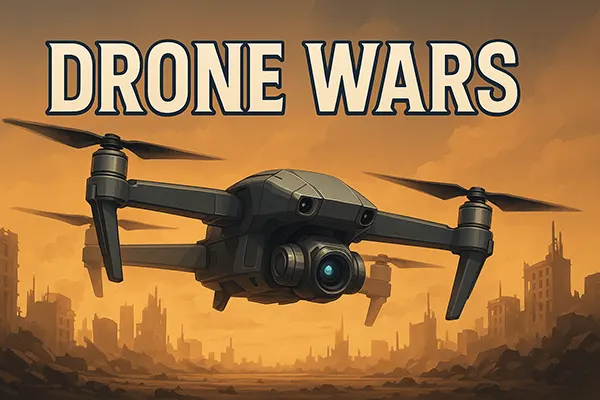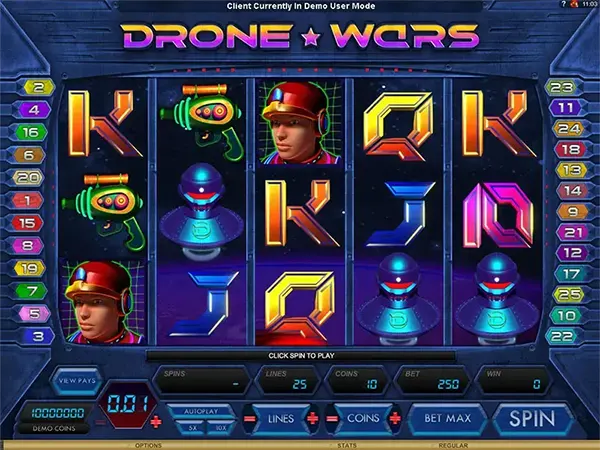
“Drone Wars”: What the Tactic Air Drone Would Look Like in a Red Tiger Slot
What if the battlefield-ready Tactic Air Drone entered the flashy world of video slots? With Red Tiger’s signature style of vivid graphics and feature-rich gameplay, the concept of “Drone Wars” emerges as a bold and futuristic theme. This article imagines how such a concept could take form in a real slot machine game, based on real-world drone tech trends and current industry standards.
A Military Drone Reimagined for Reels
The Tactic Air Drone, known for its dual cameras, air pressure sensors, and folding design, makes an ideal model for a symbol-rich slot title. Its real-life features offer a foundation for developing multiple bonus functions and reel animations. Given Red Tiger’s track record in designing mechanical-themed slots with moving parts and cinematic detail, they could highlight these drone components through engaging visuals.
Each spin could trigger a drone flight sequence, with the Tactic drone flying over a war-torn cityscape or an open desert battlefield. The camera lens could symbolise a Wild icon, while propellers or battery indicators might act as Scatter symbols. These gameplay elements would closely align with the drone’s realistic technical features, maintaining a balance between entertainment and authenticity.
The game could also integrate a variable weather system—dust storms, fog, or night vision—that reflects real drone flight conditions. These could modify reel visibility or symbol volatility, adding dynamic layers to the gameplay without relying on artificial tension or gimmicks.
Potential Mechanics and Features Inspired by the Drone
To transform the Tactic Air Drone into a high-performing slot game, Red Tiger could utilise three main technical aspects: surveillance, navigation, and energy management. Surveillance could trigger a bonus mode called “Recon Run,” where players guide the drone to gather intel in exchange for multipliers. This makes use of the dual camera system the real drone is equipped with.
Navigation-based mini-games could involve players choosing routes to avoid aerial threats or complete reconnaissance missions, with success yielding free spins or expanding symbols. This layer of interactivity would mimic drone piloting decisions, giving players a tactile experience.
Energy management could be integrated as a timed feature. For instance, each session of bonus spins might begin with a full battery indicator, gradually depleting with each spin unless players land “battery recharge” symbols. This would introduce light strategy without overwhelming casual users.
Visual Identity and Sound Design of “Drone Wars”
Graphically, Red Tiger could opt for a crisp, hyper-realistic style rather than cartoon motifs. Detailed drone renders with mechanical textures, rotating blades, and illuminated lenses would appeal to both military enthusiasts and fans of high-tech visuals. A HUD-like interface with altitude and compass markers could reinforce the simulation aesthetic.
The background setting could shift between urban ruins, high-altitude views, and military outposts, depending on the player’s progress or level. This progression model keeps visual engagement high while aligning with mission-style objectives common in drone operation.
Sound design is equally critical. Mechanical whirring, lock-on beeps, and muffled radio chatter could create a suspenseful atmosphere. Winning combinations might be announced through a robotic voice system, while high-payout sequences could trigger a drone-strike animation with cinematic depth.
Immersive Feedback and Realistic Animations
For realism, animations must replicate actual drone movement—hovering, banking, and rapid descent. These would replace traditional spinning reel animations in certain segments of the game, creating short transitions that are immersive but not disruptive. Red Tiger could use these sequences to introduce bonus levels or new mission objectives.
Adding a “Target Lock” function would visually highlight clusters of high-value symbols before the drone strikes the target zone, reshuffling symbols or revealing Wilds. This provides a functional justification for reel changes while reinforcing the drone concept.
Such animations would benefit from smooth frame rates and responsive sound cues, making them feel grounded rather than over-stylised. Players would recognise the inspiration behind the movements, adding to the game’s perceived realism.

Market Position and Target Audience
Slot titles inspired by military or tactical tech attract a unique segment of players—often tech-savvy individuals interested in real-world gadgets. This audience overlaps with fans of strategy games and sci-fi titles, making “Drone Wars” appealing beyond traditional slot players.
In 2025, real-time strategy and simulation experiences are being increasingly embedded into online slots. A Red Tiger release themed around the Tactic Air Drone would align with these market developments and set a new precedent in hybrid slot design. There’s a growing appetite for slots that do more than spin—they must now engage, educate, and immerse.
Moreover, this theme allows the game to tap into seasonal marketing windows—such as military commemoration dates or drone expos—without resorting to controversial imagery. The military tone is softened by the game’s focus on surveillance and intelligence rather than violence.
Commercial and Licensing Considerations
Licensing the visual identity of the Tactic Air Drone would not only lend credibility to the game but also serve as cross-promotion for the hardware itself. Red Tiger has experience in licensed games and could navigate such agreements effectively. This could open pathways to other drone brands or tech companies in future projects.
However, compliance with advertising standards remains important. The game must avoid glamorising warfare or presenting military hardware as toys. Responsible representation, coupled with an age-gated marketing strategy, ensures regulatory alignment across key jurisdictions.
Finally, promotional campaigns could highlight the game’s tech-driven mechanics rather than overpromise emotional payoffs. Showcasing the engineering inspiration and tactical design would build interest among a niche yet dedicated player base.
